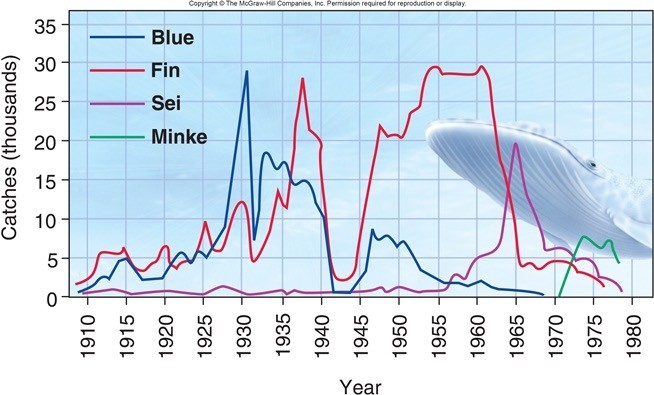Which of the following structures is made of membranes?
A. nucleolus
B. centriole
C. chloroplast
D. ribosomes
C. chloroplast
You might also like to view...
All of the following are examples of natural selection EXCEPT
A. the 150 breeds of dogs developed from ancestral wolves. B. the distribution of dark and light colored peppered moths in Britain. C. a rise in bacterial resistance to antibiotics. D. the reduction in beak length of scarlet honeycreepers when they changed food sources. E. two of these are not examples of natural selection.
 Fishing by humans has severely affected populations of many different marine species, including whales. Examine the figure above, making sure to note what each axis represents. What can best explain the pattern for minke whales?
Fishing by humans has severely affected populations of many different marine species, including whales. Examine the figure above, making sure to note what each axis represents. What can best explain the pattern for minke whales?
A. Minke whales were too difficult to catch until they become malnourished due to exploitation competition by other whales. B. Minke whale populations were overfished in the early 1900s, then recovered in the 1970s as their competitors were killed off. C. Minke whales are a new species that evolved during the 1960s as an ecological niche opened up. D. Commercial whalers did not pursue minke whales until the more valuable whale species had declined.
Which one of the following options applies to chytrids?
A. form basidia during sexual reproduction B. are the source of penicillin C. form symbiotic relationships with algae D. have flagellated gametes
Several new tetraploid species of a plant called salsify (Tragopogon) have arisen in western North America. These new species each arose from a diploid species that went through the process of allopolyploidy. This mode of speciation is a type of ________ and it occurs ________.
A. sympatric speciation; very slowly B. sympatric speciation; almost instantaneously C. allopatric speciation; almost instantaneously D. allopatric speciation; very slowly E. adaptive radiation; very slowly